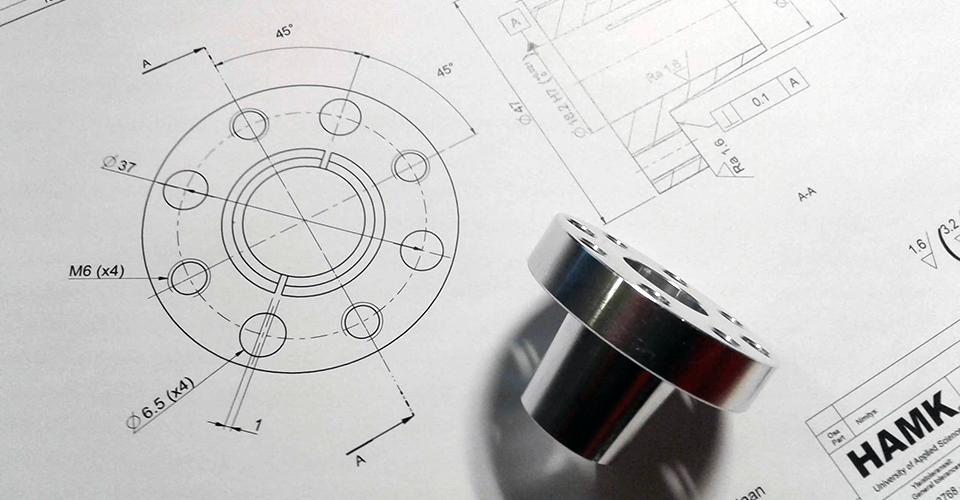
Teppo Syrjäaho
Online studies that enable distance learning can be implemented in many different ways. What is common to all of these implementation methods is the utilisation of digital tools and the aim to facilitate study activities that can be done anywhere and, increasingly often, at any time. Online teaching forces teachers to adopt new teaching methods, which then increases the significance of course planning.
Flipped course planning starts at the end
Traditional course planning often follows the same basic formula: first, the teaching materials and related tasks are developed on the basis of preassigned contents. This often takes place during the study module, as the teaching progresses. At the end of the module, an exam or equivalent is created to serve as the basis for the evaluation of what the students have learned. This traditional model provides many degrees of freedom to edit a course’s contents and teaching as the module progresses, but this model is ill-suited for online courses.
One way to design a multiform online course is to employ the flipped method, where the planning process starts at the end, i.e. what the actual competences are that the students will have at the end of the course. The planning process progresses chronologically as follows:
- Clarify the learning outcomes of the module in more detail than in the module’s learning objectives that have been defined in accordance with the curriculum, i.e. split up the learning outcomes into a clear set of competence goals. On the basis of these, think about how the student should demonstrate their skills for each objective.
- Prepare the assignments, projects, tests etc. that the student can use to demonstrate their competence for each learning objective. Remember to design these in a way that they can be completed remotely.
- Design a set of teaching materials that enable students to complete the necessary assignments and other tasks that will allow them to demonstrate their competence.
- Schedule these competence demonstration activities in a way that the students’ workload remains at an appropriate level throughout the module. At this stage, you should also consider including guidance times that can be arranged for example via Skype so that your students have the opportunity to ask questions or extra clarification.
After this, you will be ready to implement your plan, collect student feedback related to the topic and, whenever necessary, make any necessary changes before the module is to be arranged again.
Case Technical drawing
In the spring of 2017, in the Mechanical Engineering programme at Häme University of Applied Sciences, a multiform module “Design of a beam structure” was implemented. One part of this module was the Technical drawing course (6 credits). The online implementation of the technical drawing course was planned ahead in accordance with the principles of flipped course planning. According to the curriculum, the learning outcome for this part of the module is: “The students understand the principles of modern 3D design and is able to apply them in practice.” During the planning process, this rather extensive and ambiguous learning outcome was divided into seven smaller parts that served as the bases for the assignments that the students used to demonstrate what they had learned. Students received points for the assignments that they completed, and their final tallies determined the grades they received for that part of the module. Depending on the scope of each assignments, their maximum points for the assignments varied between two to seven points, shown in Table 1.
Table 1. Assignments, due dates and maximum points.
| ASSIGNMENT | DUE DATE | MAX. POINTS |
|---|---|---|
| 1. Extrude feature | 18/03/2018 | 3 |
| 2. Lego modelling | 25/03/2018 | 3 |
| 3. Mechanical drawing assignment | 01/04/2018 | 4 |
| 4. Spark plug | 11/04/2018 | 5 |
| 5. Corkscrew | 22/04/2018 | 6 |
| 6. Exploded view | 26/04/2018 | 2 |
| 7. Welded structure design | 06/05/2018 | 7 |
| 30 |
All assignments and study materials were made available to students at the start of the module. However, the due dates were strictly defined. This model provides active students with the opportunity to complete tasks ahead of time and plan personally tailored study schedules. However, to help ease teacher workloads, the feedback and evaluation for submitted assignments is provided to all students soon after the due date and at the same time, i.e. this model does not aim for fully nonstop implementations. The benefit of the weekly assignment model is that less active students will also realise that they will need to improve their performance if they do not return their assignments or earn low scores from their assignments. Assignment-specific feedback usually included a small amount of written feedback in addition to the point-based assessment.
The teaching follows the flipped classroom model, i.e. students are expected to independently familiarise themselves with the existing study materials, complete the related assignments, and are also provided with office hours where they can receive guidance. When preparing these types of assignments, pay close attention to how you write out your instructions so that you are able to minimise the possibility of any misunderstandings. The study materials consist primarily of instructional videos that have been made for each implementation. However, experiences have shown that the same videos can later be used as effective supplementary materials in modules that are based on the principles of traditional classroom teaching. The key point for this implementation method is that the study module is planned out in detail and that the study materials and related assignments have been finalised before the actual implementation is set to begin.
Experiences
The course included 41 students, and 37 of these students completed it by the given deadline. One student was a little late in returning their missing assignments, but they were still within the evaluation period. Three students were unable to complete the course on time and had to supplement their performances at a later date. Student feedback on the implementation of the course was very positive overall. For example, students provided positive feedback on the freedom to schedule their studies, the punctuality of their studies, and the video content that was created to support their studies. The students also praised the personal feedback that they received for their assignments. When planning the implementation, it is important to consider how students will receive feedback for their competence demonstrations. In a traditional classroom teaching, it is easy to provide continuous feedback to students without having to pay special attention to the matter. However, in distance learning, it is particularly important to ensure that students receive clear feedback on their progress throughout their studies.
When planning the implementation schedule for any multiform teaching, take into account the necessary contact days that are part of the teaching. Different laboratory assignments and other performances that require students to be present must be taken into account when drafting any schedules. On the other hand, consider whether there is a need for contact teaching at all, or whether the contact teaching could be implemented as supplementary studies for students who need extra assistance in addition to the available online learning materials. As an example, one of the contact days in the example implementation was carried out in such a way that the students were simultaneously provided with guidance on the technical drawing process and calculation exercises that were related to the dynamics and strength theory related to the same module. The students were allowed to choose freely between these two events. This arrangement was well-suited for the educational principles of the flipped classroom and received positive feedback from students. The overall implementation also proved that the students were able to achieve the same level of expertise through online teaching as they would have with traditional teaching methods.
This article was originally published as Käänteinen opetussuunnittelu verkko-opetuksen toteutustyökaluna in Finnish in February 2019.
Author

MSc (Tech) Teppo Syrjäaho, works as a Senior Lecturer in Mechanical Engineering at HAMK.





